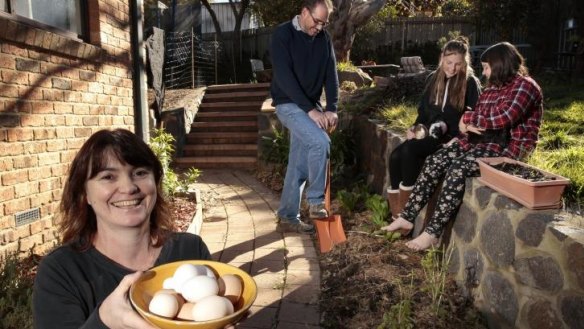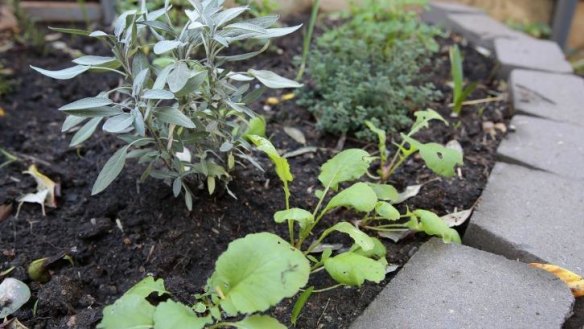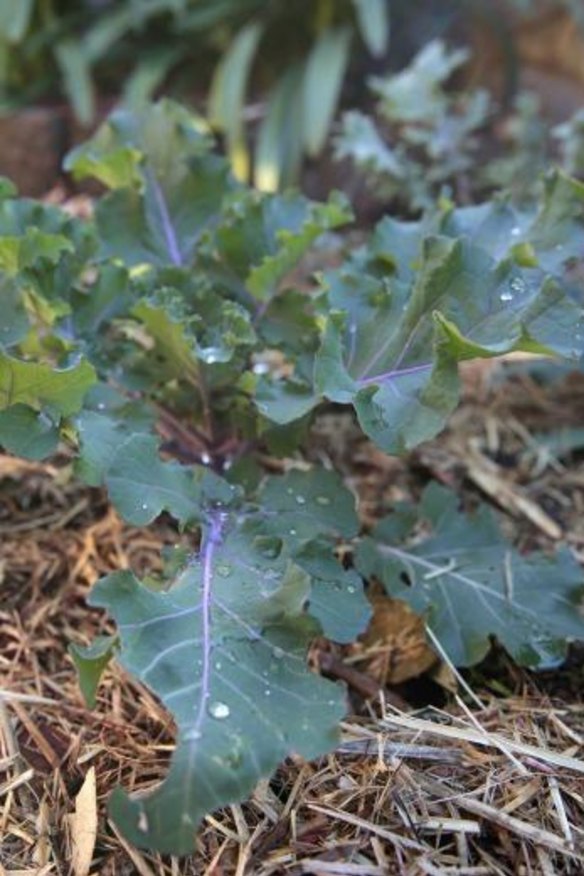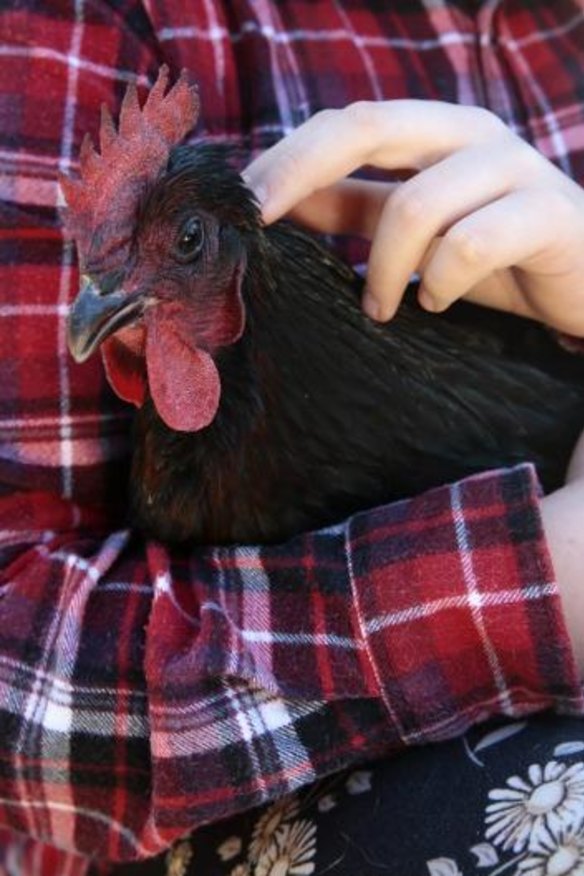Susan Parsons: Sustainability at heart of Jane Dickenson's 'experimental' garden

As June 5 is United Nations World Environment Day and the 2015 theme is Sustainable Consumption and Production, we wanted to find someone new to Canberra kitchen gardening who cares about sustainability.
"You may be interested to meet my boss who has been experimenting with growing vegetables," said a former Kitchen Gardener, "there's cauliflower, spinach, cabbage, kale, plenty of herbs and more. She also has four chickens (not to mention a house full of kids, cats and guinea pigs!)"
So it was off to Theodore to meet Jane Dickenson in her house high on Tuggeranong Hill. Jane came to Canberra in the early 1990s from Tasmania via Perth, Alice Springs and Darwin, but the blended family moved in to Theodore two years ago.

Jane wanted to grow things to eat so she started watching gardening programs on TV, Googling edible plants, looking at books and "talking about garden stuff at work, it's a good topic of conversation and we swap hints and people bring in excess from crops of zucchini and pumpkins".
The backyard was very messy and another "kitchen garden learner" at work told Dickenson to put newspaper down first on the raised level areas of patchy grass and weeds. Old copies of The Canberra Times have been very useful. These were covered with cow and chicken manure and sugar cane mulch then the ground was left like that all last winter.
Jane's partner, Dave Anderson, constructed a black metal fence to enclose the chook run for nights Another fence and gate from old slatted bed heads, wire and bamboo stakes and white netting structures ensure the four chooks don't eat all the plants, including the tasty young cabbages, when they roam free in the day. They scratch and peck (and poo) and improve the garden beds when they are not in use. The whole cycle works really well.

The chickens are Australorps crossed with New Hampshire, two speckled hens and two black. Three of them lay brown eggs and the other lays white eggs. The four fresh, fantastic-tasting eggs a day have the date of laying pencilled onto their shells. Quiche is popular in the household and Jane makes a pavlova to her mum's recipe using four eggs whites. During our photo shoot the two younger girls in the family, Kerri, 14, and Ruby, 12, had one chook, Iris, and the guinea pig, Mr Piggy, so relaxed they were falling asleep.
A large garden bed is being replanted for winter but it provided pumpkins, corn, zucchini, watermelons and different types of tomatoes throughout summer and autumn. Jane said the family pretty much eats everything as it is picked, though she did make green-tomato chutney when the cold weather arrived. Some of the tomato plants had come from a co-worker in Jane's office.
Near the large guinea pig hutch, made by Dave, which is under a pergola near the kitchen door, is a corner bed filled with herbs so Jane can pop out to pick herbs to go with any dish she is cooking. The pergola posts are wound with raspberry and blackberry vines. A pathway to the higher part of the block is lined with Russian and Tuscan black kale, chillies, lettuces and strawberry plants. Jane says she "just basically goes to Bunnings and buys what's there."

"I really enjoy it, being able to go out and pick things to cook with. It's good exercise, gardening, fresh air. Having a garden and chooks and other pets means nothing is wasted. We pick fresh herbs, lettuce and rocket to feed the guinea pigs, the chooks eat leftovers and everything else goes into the compost. There are lots of rewards and the five kids like it too – not actually doing much but just hanging around outside and seeing us grow things. We also walk in the nature reserve which is just behind us."
Although Jane says this is a novice garden, she is not entirely new to growing things as she grew up on a dairy farm in north-west Tasmania where they had pea crops which were harvested for Edgells and also opium poppies grown for a drug company.
From our Kitchen Garden organic tips competition in April here are two winning ideas for gardeners like Jane who keep chooks.
* From Narrabundah, "Save eggshells, crush them, sprinkle around newly planted seedlings as it keeps snails away as they won't slither over the rough shell. Eggshells provide nutrients to the soil when they break down in a few months, then you can dig them in. No chemicals or nasty deaths for the snails who just do their snaily thing."
* From Kambah, " Place a large black plastic plant pot in the vegetable garden, throw in cattle or horse manure (picked up around Canberra paddocks) then toss in generous buckets of kitchen scraps and water from pasta, teapots, vegetable cooking. The resulting mixture will keep draining out onto little seedlings, giving moisture and feeding them. Once the bucket is overflowing, dig a hole and bury the contents. Throw the slaters which congregate beneath the bucket to your chooks."
Susan Parsons is a Canberra writer.
Restaurant reviews, news and the hottest openings served to your inbox.
Sign up